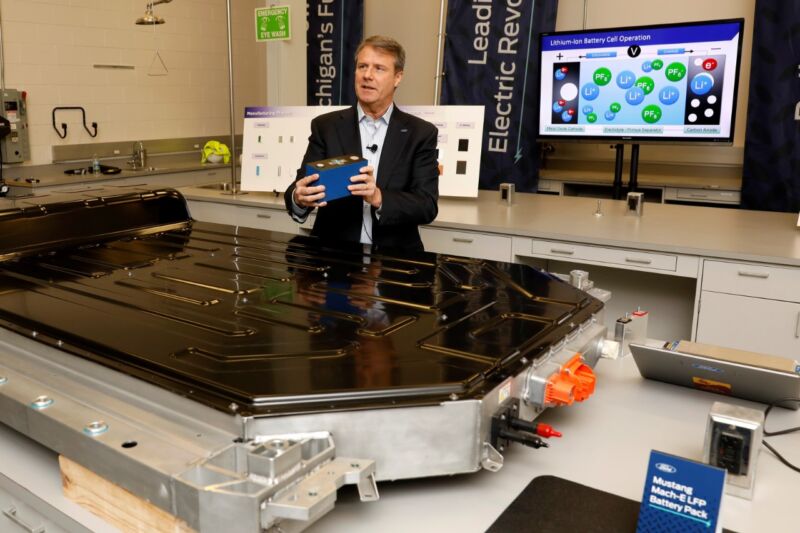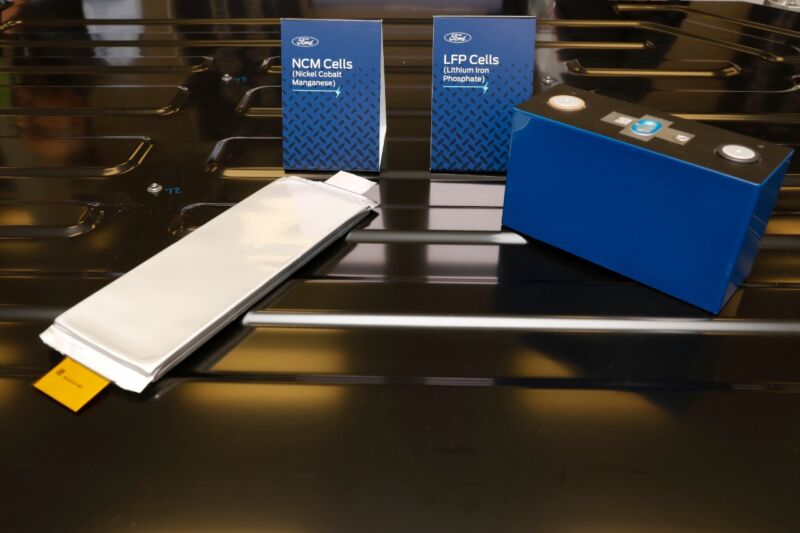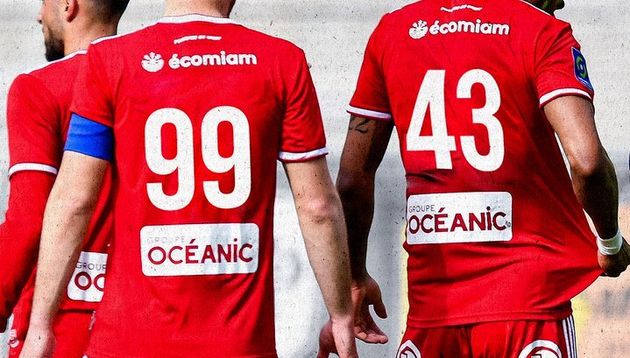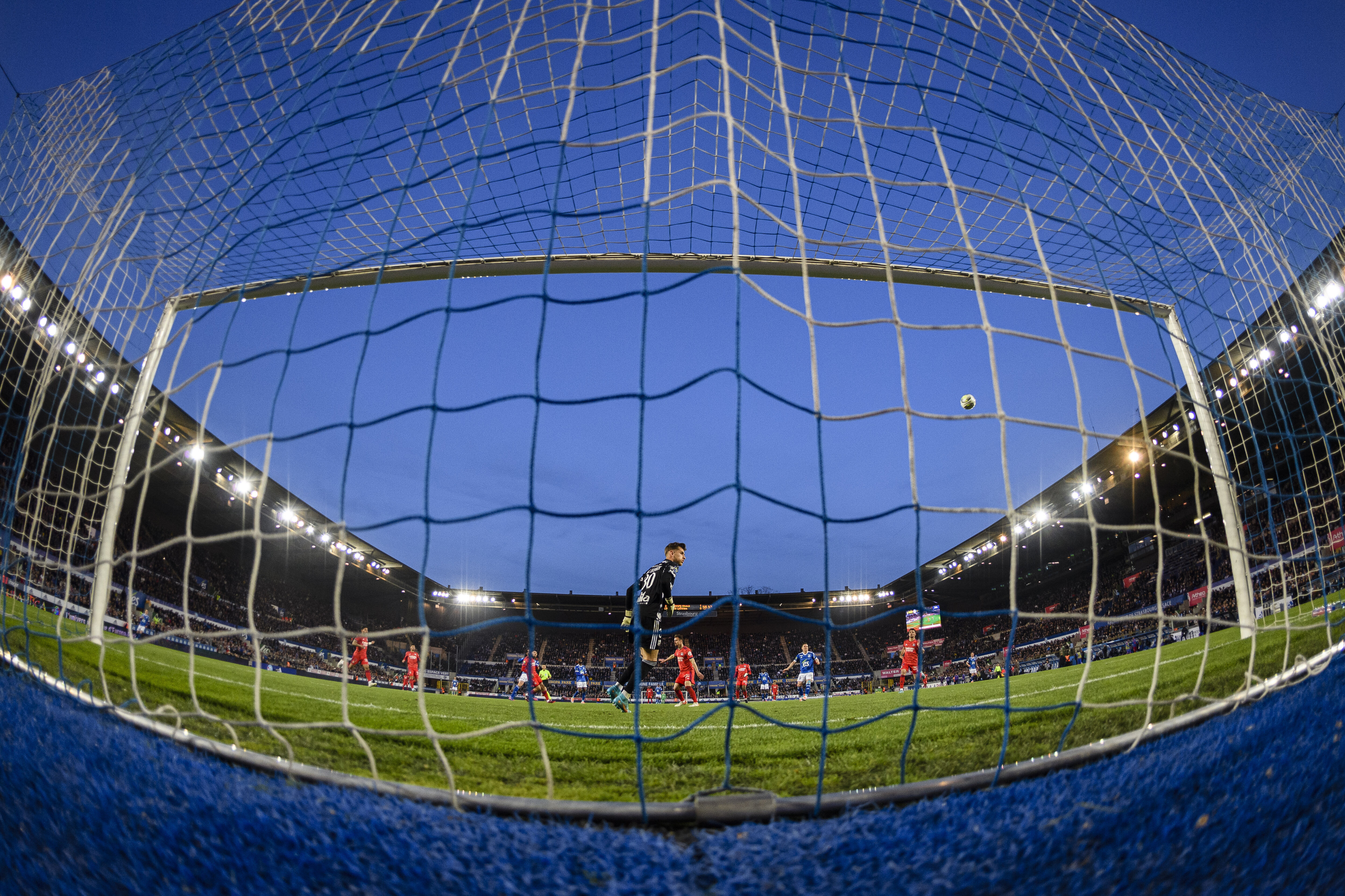-
 chevron_right
chevron_right
Ford pauses work on $3.5 billion battery factory in Michigan
news.movim.eu / ArsTechnica · Monday, 25 September, 2023 - 21:30 · 1 minute

Enlarge / Ted Miller, manager of Ford Battery Cell Research and Advanced Engineering, holds a lithium iron phosphate (LFP) battery during a presentation on Monday, February 13, 2023 at Ford Ion Park in Romulus, Michigan. (credit: Ford)
The past couple of years have seen a flurry of newly announced battery factories in North America. The Inflation Reduction Act of 2022 is the main reason—it ties an electric vehicle's federal tax credit to domestically sourced batteries , among other conditions, so automakers have been scrambling to build that capacity locally. But today's news is rather more unusual. According to the Detroit News, Ford is pushing pause on one such facility, suspending all work on the $3.5 billion project.
The plant in question is called Blue Oval Battery Park Michigan, located in Marshall, Michigan. Ford announced the new site in February , which it said would be responsible for making lithium iron phosphate (LFP) cells. This is a less energy-dense chemistry than lithium-ion chemistries (like nickel cobalt manganese or nickel cobalt aluminum), but it can tolerate more charging cycles and is cheaper to make.
Intellectually property issues have meant LFP cells have been uncommon in EVs outside of China, but that's beginning to change; Tesla fits some of its EVs with LFP cells, and Ford secured supplies of LFP cells from the Chinese battery company CATL for use in the Mustang Mach-E crossover and from next year, the F-150 Lightning pickup truck.




 Illustration des maillots du Stade Brestois avec la nouvelle réglementation concernant les numéros de maillot.
Illustration des maillots du Stade Brestois avec la nouvelle réglementation concernant les numéros de maillot.

